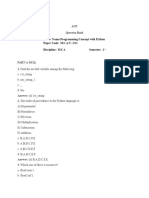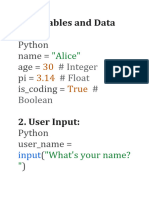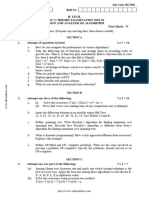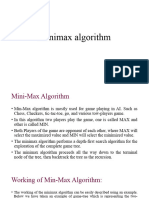0% found this document useful (0 votes)
19 views12 pagesPy Assignment2
A module is a file containing Python code that can define functions, classes, and variables, allowing for code organization and reuse. Advantages of using modules include improved code maintainability, easier debugging, and the ability to share code across different projects. Modules promote the separation of concerns, making it easier to manage large codebases.
Uploaded by
Ritesh bhusaraCopyright
© © All Rights Reserved
We take content rights seriously. If you suspect this is your content, claim it here.
Available Formats
Download as PDF, TXT or read online on Scribd
0% found this document useful (0 votes)
19 views12 pagesPy Assignment2
A module is a file containing Python code that can define functions, classes, and variables, allowing for code organization and reuse. Advantages of using modules include improved code maintainability, easier debugging, and the ability to share code across different projects. Modules promote the separation of concerns, making it easier to manage large codebases.
Uploaded by
Ritesh bhusaraCopyright
© © All Rights Reserved
We take content rights seriously. If you suspect this is your content, claim it here.
Available Formats
Download as PDF, TXT or read online on Scribd
/ 12





















































































